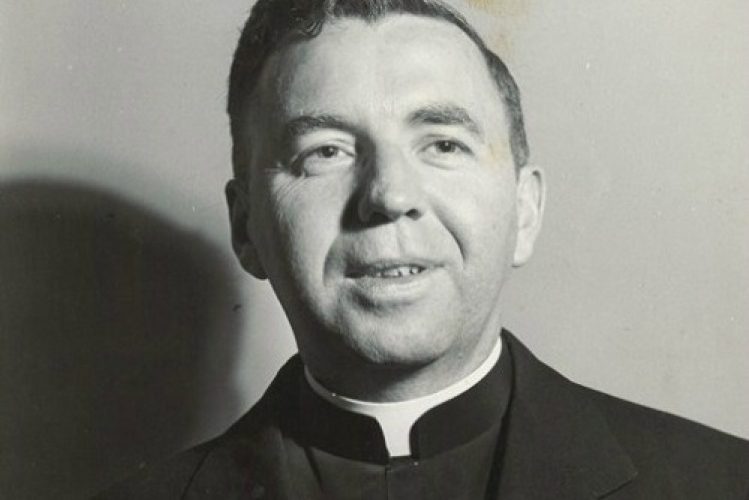William Lynch on Hope, Confusion, and Hoplessness

Yesterday, in my course: Faith, Reason, and Culture, we began our Christology unit by looking at the parables, and unpacking them with the use of a particular method I generated several years ago that I have found rather effective. I’m struck often by how the difficulty posed by these parables for a particular mindset, as intended by Jesus, is not lost on my students. Having cultural norms, say, of fairness, or plausibility, shattered by the power of these parables, while giving great hope to some, can leave others feeling rather flustered—just as in Jesus’s time.
In working on an essay related to hope and hopelessness, I have had in mind a book by William F. Lynch, S.J called Images of Hope: Imagination as a Healer of the Hopeless. Some of his words seemed pertinent to the discomfort many feel in viewing the exuberant displays of help, forgiveness, and generosity, in the parables, that seem in some way ridiculous. The book is a bit dated (1965), so something of a grain of salt is sometimes needed, but I generally find the insights offered by Fr. Lynch († 1987) quite helpful, to say the least. I came into contact with this book over a decade ago as a result of its mention by the Irish theologian, Fr. Dermot Lane, in a paper he presented at a conference on theology and the imagination, in Leuven.
Consider the following passages on how hope comes from the experience of help, so hope is always a hoping with. The parallels to a fundamentally Christian anthropology are quite apparent.
‘The truth is that hope is related to help in such a way that you cannot talk about one without talking about the other. Hope is truly on the inside of us, but hope is an interior sense that there is help on the outside of us. There are times when we are especially aware that our own purely inward resources are not enough, that they have to be added to from the outside. But this need of help is a permanent, abiding, continuing fact for each human being; therefore, we can repeat that in severe difficulties we only become more especially aware of it. Our civilization tends to associate a sense of shame with the need for help, as if all real “life” must come from within. If anything need come from the outside there is something wrong with us! Such a view of the human world, which is profoundly pelagian, requires careful clinical and theological analysis.’ (40)
‘Here I would like to express a conviction of mine. I believe that our need for help is deeply inscribed in every part of us and is identical with our human nature. The need and the fact is so strong, powerful and characteristic that it can be frightening (especially if its first childhood manifestations have been traumatic or sharply frustrating). The result is that this need, this deep relationship to help, tends to go underground, as I think it has in our national culture. (We force people to go around desperately proving they are men.) But what is underground is still operative. This relationship to help will break out in bizarre ways; we will look for help where we really do not need it at all, or where we cannot get it.’ (41)
Thus, Lynch is very critical of a rather popular notion, perceived as Christian, tied to the slogan: ‘God helps those who help themselves’. I have even heard the slogan prefaced: ‘Well, in the Bible it says: ‘God helps those who help themselves’.’ As is noted, this line is found nowhere, at all, in any testament, chapter, or verse of the Bible. My impression is that this might surprise many people. It is also found in none of the works of theologians in the tradition. It seems to have emerged popularly around the 17th century.
Having Lynch on the brain, I could not help but think of another group of passages, in light of our political climate in general, but particularly to the acts of domestic terrorism caused by white extremists.
‘The social atmostphere of ideas and affectivity that helps to generate illness and confusion must never slip from our sight. There are great generating forces and there are powerful methods of spewing confusion into the air. But we must face the fact that society is not an abstraction: we are society; it is ourselves who do the spewing.
The ability to create confusion is one of the most destructive weapons one human being can use against another. The use of this weapon can be professional and universal; it is sadistic; it is always seeking the amateur as its victim. How does it work? That is to say, how do we do it?
There have been a number of serious studies of the nature and use of one version of this weapon, that of the “double bind.” Dr. John H. Weakland describes the double-bind situation as “that of one person giving another two related but contradictory or incongruent messages, presenting conflicting injunctions of importance, while also acting to forestall escape and to inhibit notice and comment on the inconsistency by the ‘victim.’”
In still simpler language, we may say that the double bind describes a situation in which someone who has a position of indispensable power or advantage is creating confusion in someone who is weaker; the binder is doing something negative to the victim under the guise of the positive. The victim is bound inwardly through confusion and in helplessness to the binder, who strikes and makes it impossible to strike back. (98) …
What becomes clear… is that in all such cases the one using power in this way is, in reality, the weaker and the more dependent. He must bind the other party to him. He does this by using confusion as a deadly weapon. He stings his victim into helplessness. He takes away hope. …
We shall gain victory over [the double bind] only as we become increasingly conscious of its structures and intentions and increasingly aware of the way it is used against us and by us, especially by us.’ (99)
I hope these words from Fr. Lynch give way to fruitful reflection for you, as they have for me.
